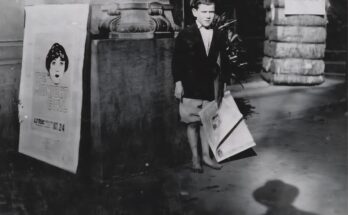Eva Tanzerová was born in the historic city of Prague, the capital of what was then Czechoslovakia. A vibrant and cultured place, Prague was home to a well-established Jewish community, whose presence had shaped the city’s character for centuries. Eva was born into this world of rich cultural heritage and Jewish traditions. Her early years were likely filled with the joys of childhood and the routines of family life, surrounded by the sights and sounds of a thriving metropolis. However, with the rise of Nazism in Germany and the growing threat of anti-Semitic policies, the safety and security of Jewish families like Eva’s began to deteriorate.
When Adolf Hitler’s forces occupied Czechoslovakia in March 1939, life changed dramatically for the Jews of Prague. Anti-Jewish laws and restrictions quickly followed, stripping Jewish citizens of their rights, professions, and property. Eva, who was still a young girl, would have experienced the confusion and fear that came with such upheaval. Jewish children were banned from public schools, families were forced to wear the yellow star, and daily life became marked by anxiety and isolation. What had once been a normal, hopeful life for Eva quickly turned into one of uncertainty and danger.
In late 1941, the Nazis established the Theresienstadt Ghetto in the fortress town of Terezín, about 60 kilometers north of Prague. It was presented as a “model ghetto” in Nazi propaganda, a place where Jews could supposedly live in relative comfort. In reality, it was a transit camp where tens of thousands of Jews awaited deportation to extermination camps further east. Eva and her family were among the many Prague Jews deported to Theresienstadt. The conditions there were harsh, with overcrowding, limited food, and constant fear looming over the imprisoned population.
On September 6, 1943, Eva Tanzerová was among the group of Jews transported from Theresienstadt to Auschwitz, the most infamous of the Nazi extermination camps located in occupied Poland. This date marked a turning point from the ghetto’s already grim reality to the horrors of industrialized genocide. Transport lists recorded her name and the date, a trace of her existence within the bureaucracy of mass murder. These transports were overcrowded cattle cars where people were crammed without food, water, or sanitation for the long journey.
Auschwitz was a place where most Jewish deportees were murdered shortly after arrival, particularly children and the elderly. Eva, still just a girl, likely never saw anything beyond the camp’s entry ramp. Those deemed unfit for labor were sent immediately to the gas chambers. It is almost certain that Eva was among them. Her young life, full of potential and promise, was extinguished within hours of her arrival. There is no record of survival, and her name is listed among the millions who perished during the Holocaust.
Eva’s death, like those of so many others, is a reminder of the personal tragedies that make up the broader horror of the Holocaust. She was not a number or a statistic — she was a child, a daughter, perhaps a sister, whose life was cut short by hatred and systemic violence. Her story is one of millions, yet each story holds unique pain and significance. Remembering her is an act of resistance against forgetting, and an assertion of her humanity.
In post-war years, efforts were made to commemorate those lost, and the memory of victims like Eva Tanzerová has been preserved in records, memorials, and historical research. Yad Vashem and other Holocaust remembrance institutions maintain documentation of her deportation and death. Though she left behind no writings or artifacts of her own, the traces of her life in official records speak to the need to remember every individual caught in the Holocaust’s machinery of death.
Today, as time distances us from the events of the Second World War, the responsibility to tell stories like Eva’s grows ever more important. In remembering her, we not only honor her memory but also reaffirm our commitment to ensuring that such atrocities never happen again. Eva Tanzerová was one of the six million Jews murdered in the Holocaust, but she was also just a girl — a child whose life was stolen. May her memory be a blessing, and may we continue to tell her story so she is never forgotten.


